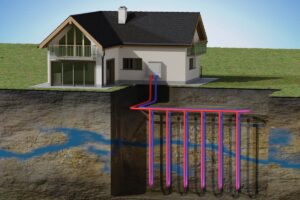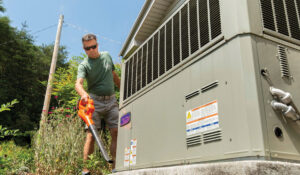Colder weather can increase energy use and bills, since heating accounts for the highest wintertime energy consumption in most homes. The amount of energy used to heat a home depends on the equipment, how it’s used, and the efficiency of the home’s shell — the building components that separate the indoors from the outdoors.
Home heating fundamentals
It’s important to know how your home is heated so you can make informed decisions on your energy use. It also helps you prepare for upcoming bills and avoid surprises that impact your budget. A forced-air furnace is the most common type of heating system and is fueled by natural gas, propane, oil or electricity.
Heat pumps are growing in popularity and are available for forced-air systems. If you have a forced-air system, check the filter regularly and replace it when it’s dirty. Ductless heat pumps, or mini-splits, boilers, radiant heat, baseboard heaters and electric resistance heaters are other common heating system types.
If you don’t know what type of system you have, find the model number of your equipment and look it up online. You’ll find information about the system, how efficiently it operates and recommendations for servicing it, which can improve efficiency.
Small changes, big savings
We use energy to make our homes comfortable. The easiest and most cost-efficient way to save money on heating is to keep your thermostat as low as comfort allows. The closer your home’s temperature is to the outdoor temperature, the less energy is used.
The U.S. Department of Energy recommends a thermostat setting of 68 degrees in the winter while you are awake and lower when you are asleep or away from home. Keep in mind that setting the temperature too low can cause pipes to freeze or moisture issues in some geographic locations.
Adding additional layers of clothing, slippers or a hat can keep you comfortable in a cooler home.
Hidden cost of space heaters
Do you use space heaters to heat a room or small section of your home? If so, you may see an increase in your electric bill. For example, let’s say you use a 1,500-watt electric space heater to warm your living room while you watch TV or read a book. Operating that space heater for 2 hours a day could cost you an additional $15 a month, on average. Operating that same space heater for 12 hours a day will cost about $90 a month.
If you choose to use space heaters, use them safely. Keep them 3 feet away from anything flammable, do not leave them unattended and plug them directly into the outlet, not an extension cord or power strip.
Stop air leaks
Just as we put on a windbreaker to block cold winds, your home also benefits from blocking air movement. Air sealing can make a big improvement in the comfort of your home as well as provide energy savings.
A common air sealing practice is applying weatherstripping to exterior doors and windows. You can also seal around plumbing penetrations to help eliminate drafts. A gap often exists between the drywall or wood and the plumbing pipes and drains. Filling these gaps with expanding foam can reduce drafts in bathrooms and kitchens.
Cold, windy winter days are the perfect time to find opportunities for air sealing. Rattling doors or moving curtains can indicate air leakage. Air leakage can occur where two different materials come together, like drywall and trim work. Cracked plaster and gaps in drywall can also cause drafts. Sealing the gaps saves energy and improves comfort.
As outdoor temperatures dip this winter, take a few proactive steps to maintain comfort in your home and keep your energy bill in check.










